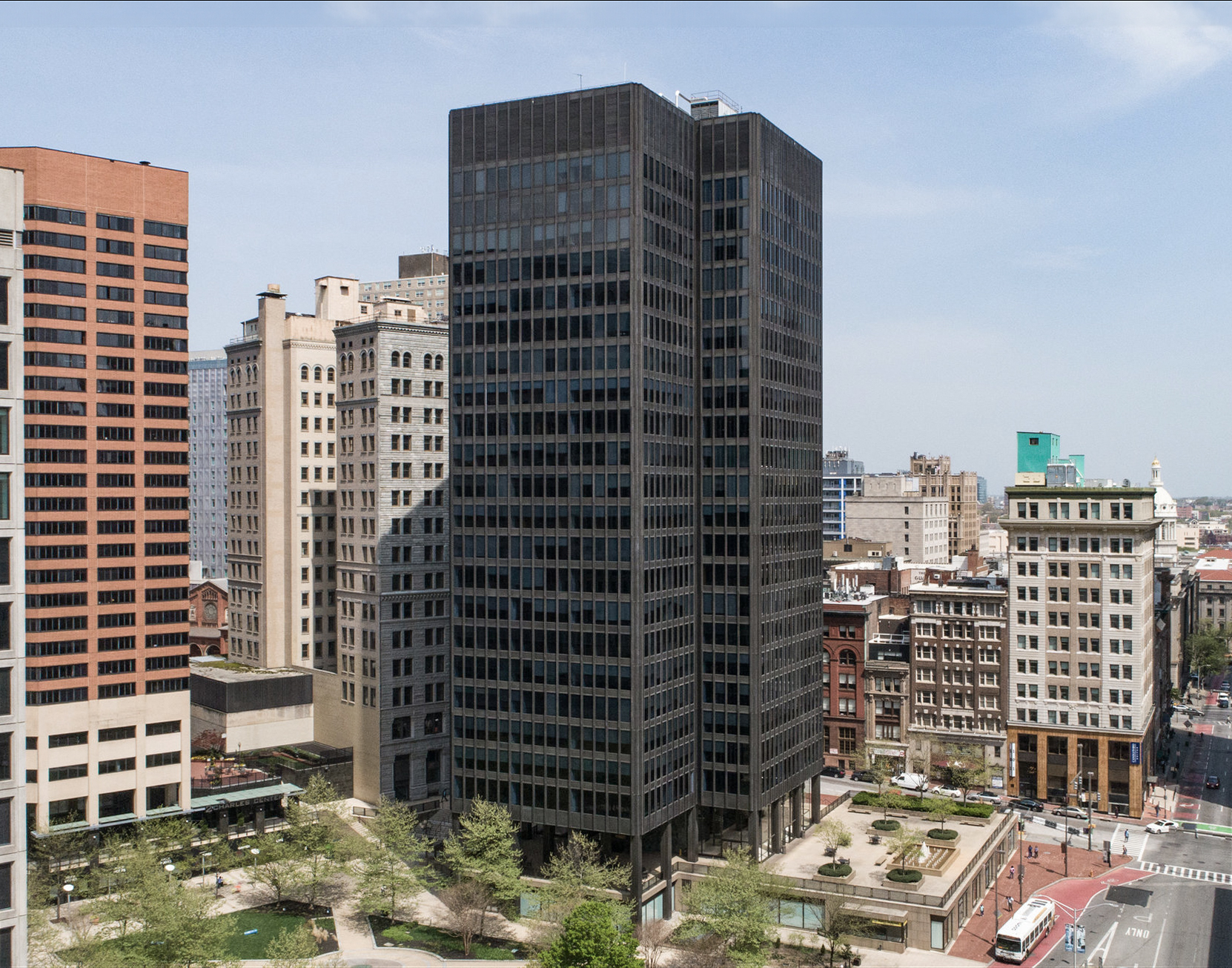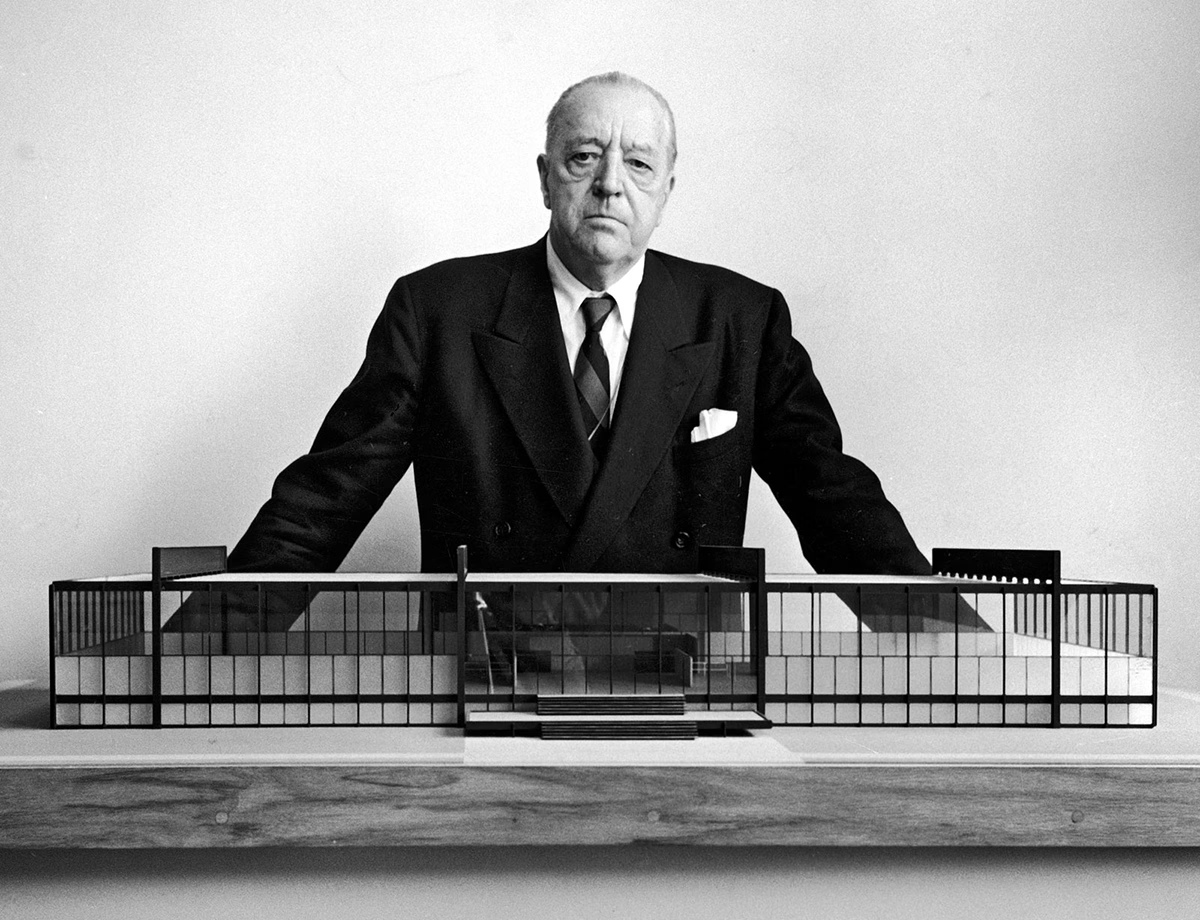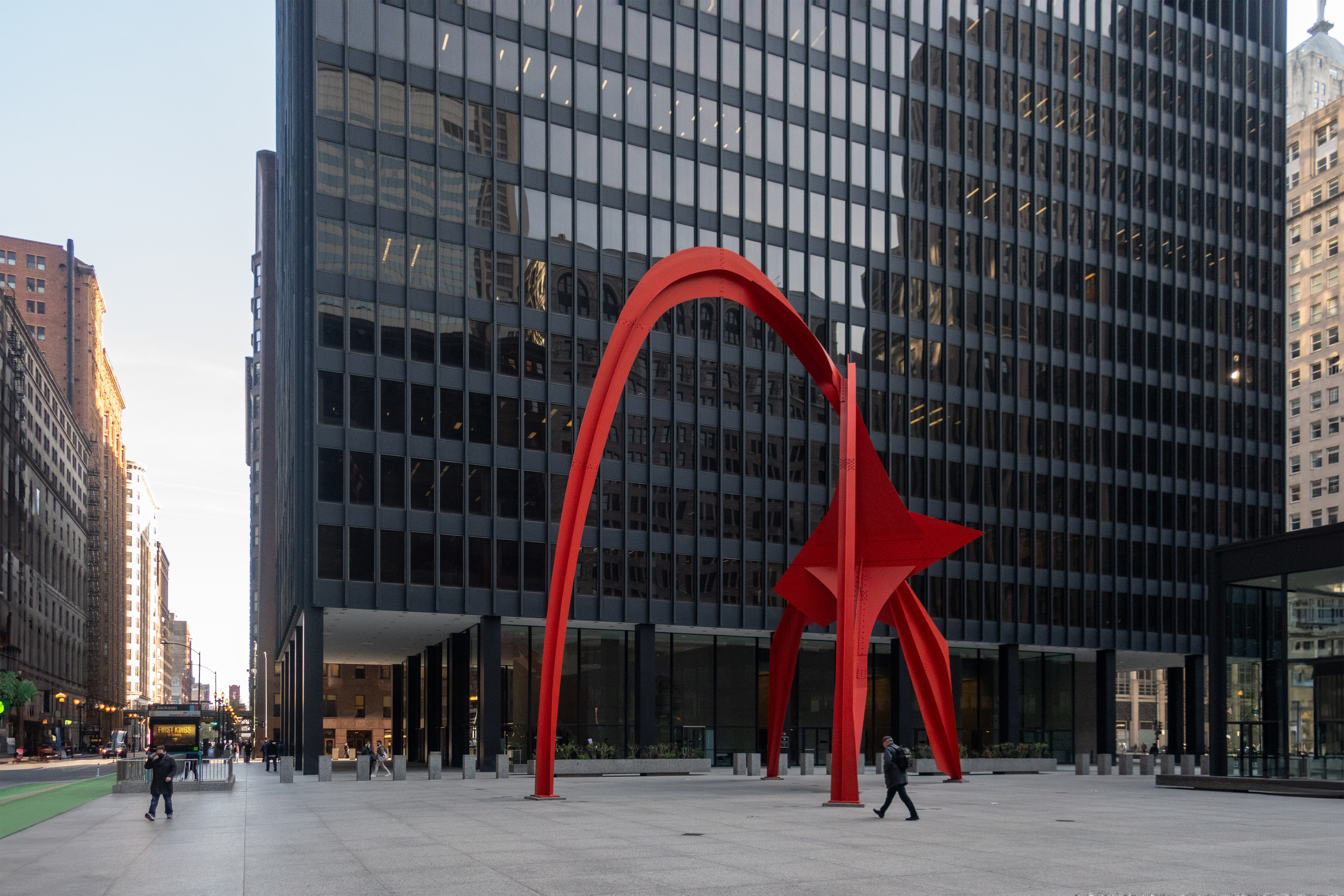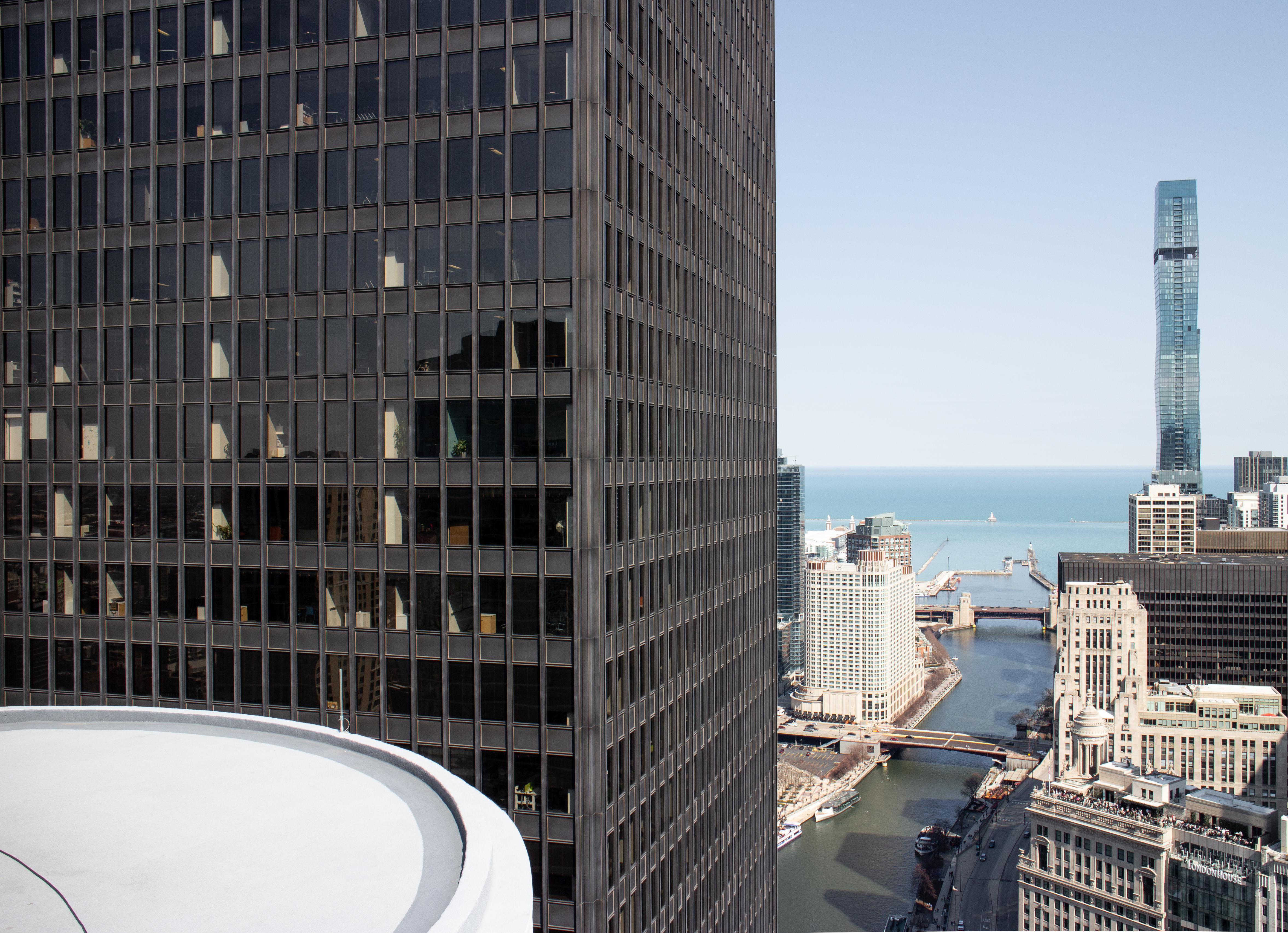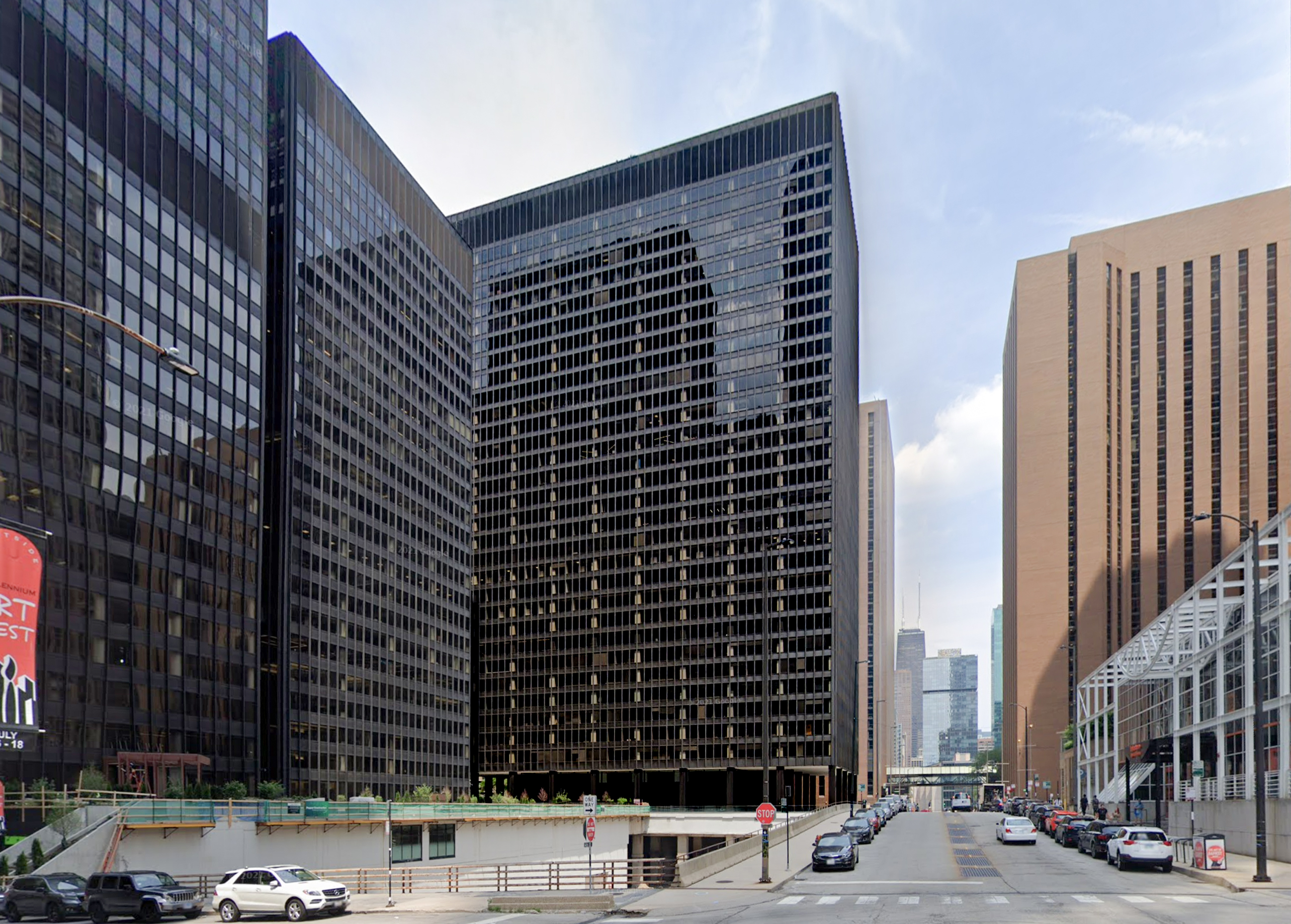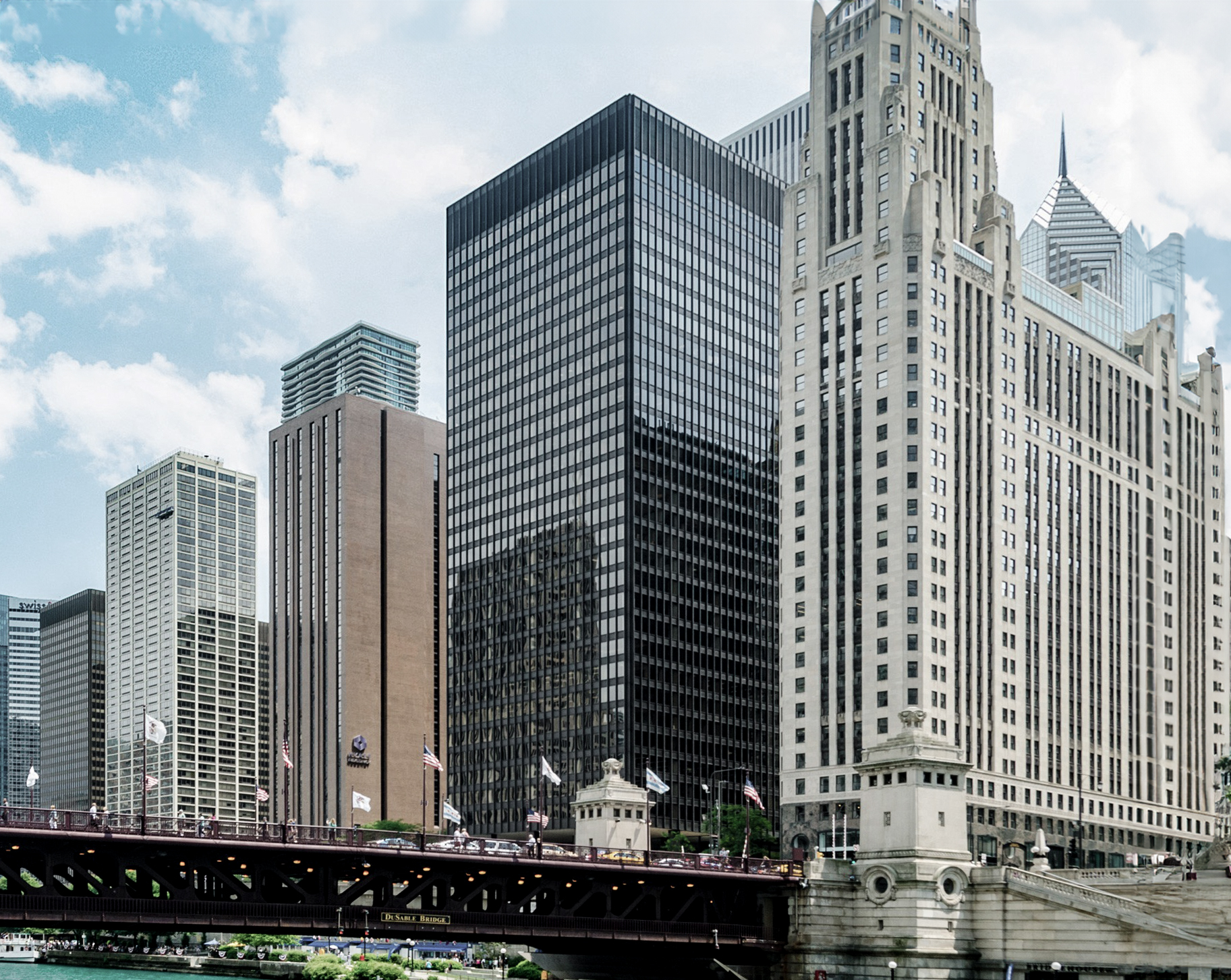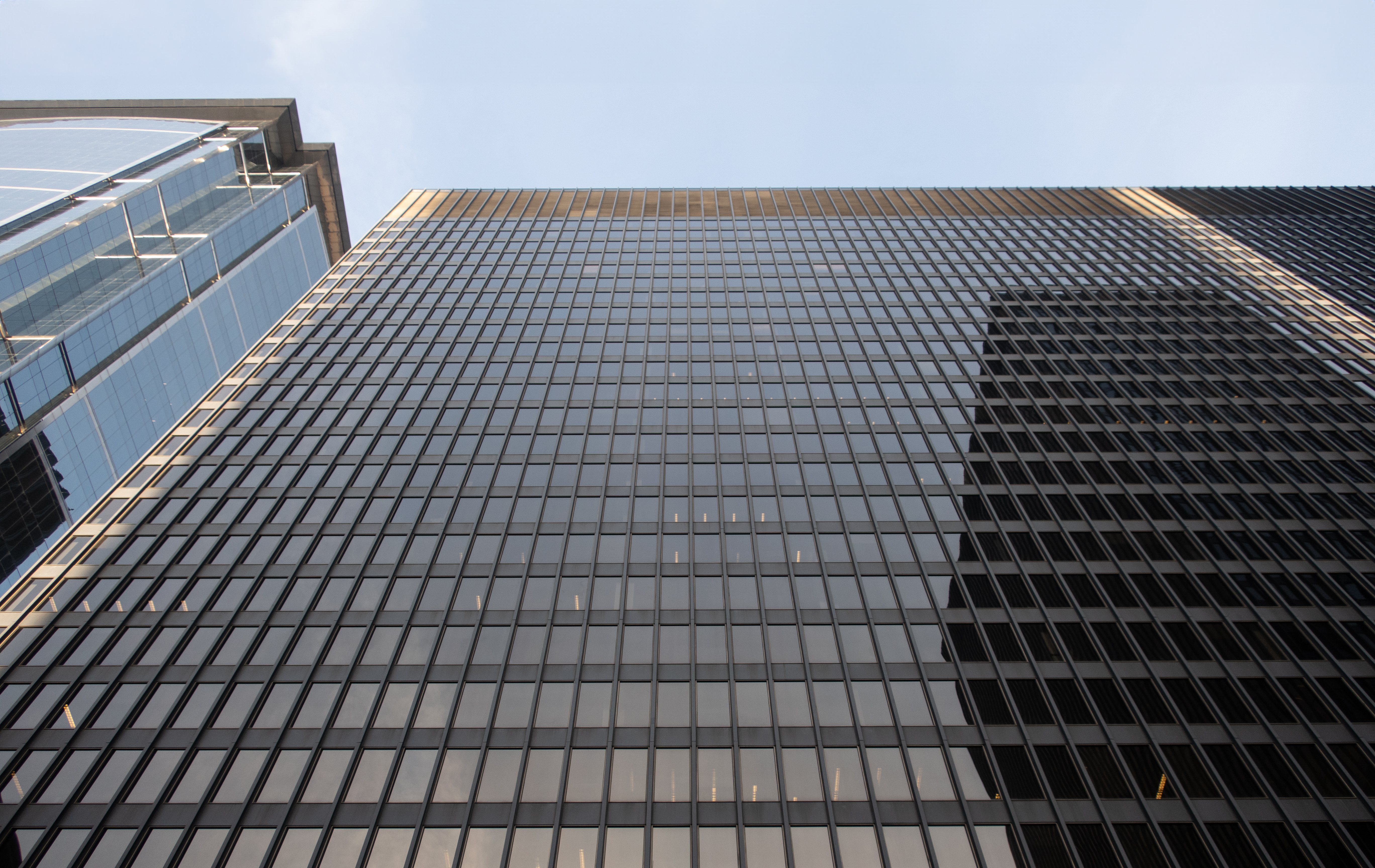The One Charles Center is an International Style skyscraper designed between 1959 and 1960 by Mies van der Rohe, and built between 1960 and 1962, for a reported $12.0 million dollars, in Baltimore, MD. Mies van der Rohe was commisioned to design the building after winning the competition that was held in 1960.
Its precise street address is 100 North Charles Street, Baltimore, MD. You can also find it on the map here.
The One Charles Center is a structure of significant importance both for the city of Baltimore and the United States as a nation. The building embodies the distinctive characteristic features of the time in which it was built and the International Style style. Because of that, the One Charles Center was officially included in the National Register of Historic Places on July 13th 2000.
The One Charles Center was awarded with the First Honor Award by the Baltimore Chapter of the American Institute of Architects.
The building stands on a concrete podium topped by a plaza. Initially the podium and the plaza was paved with travertine marble, although the material was replaced at some point in the 80s. The podium is currently clad with pre-cast concrete panels.
The poidum houses retail space and an underground parking.
The building has been restored 2 times over the years to ensure its conservation and adaptation to the pass of time. The main restoration works happened in 1987 and 1993.
